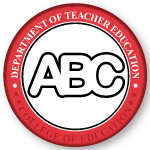Document Type
Report
Publication Date
1-30-1996
Abstract
The goals of the Internet Evaluation Project, undertaken cooperatively by the University of Nebraska at Omaha and the Nebraska Consortium of Educational Service Units, focus on a long range assessment of Internet integration into the K-12 Nebraska schools and the support delivered by the Educational Service Units (ESUs). The purpose of this report is to relate progress, after 24 months, of a comprehensive evaluation process, which is examining the impact on teachers, students, and schools. In addition to a pre-training and post-training teacher survey data, information is being gathered from machine-based ESU server support data, and observed classroom uses and projects. Each of the teacher survey, server, and innovative use data sources was examined for related implications, with cross-referencing between sources conducted when appropriate. General implications include: (1) significant progress is being made for the implementation of LB 452, and LB 860 promises to also assist in Internet integration; (2) community interest is continuing to parallel educational interest; (3) statewide dialogue is becoming increasingly important; and (4) Nebraska continues to play a national leadership role. Appendices provide the pre- and post-training surveys; pre- and post-training survey graphs; the Internet coordinator's data request form; the innovative user electronic mail protocol; and innovative user interview protocol.
Recommended Citation
Topp, Neal; Grandgenett, Neal; Ostler, Elliott; University of Nebraska at Omaha; and Nebraska Consortium of Educational Service Units, "Nebraska Internet Evaluation Project: Year 2 Progress Report" (1996). Teacher Education Faculty Publications. 48.
https://digitalcommons.unomaha.edu/tedfacpub/48
Files over 3MB may be slow to open. For best results, right-click and select "save as..."


Comments
Nebraska Consortium of Educational Service Units., & Nebraska Univ., Omaha. (1996). Nebraska K-12 Internet Evaluation Progress Report--Year 2.